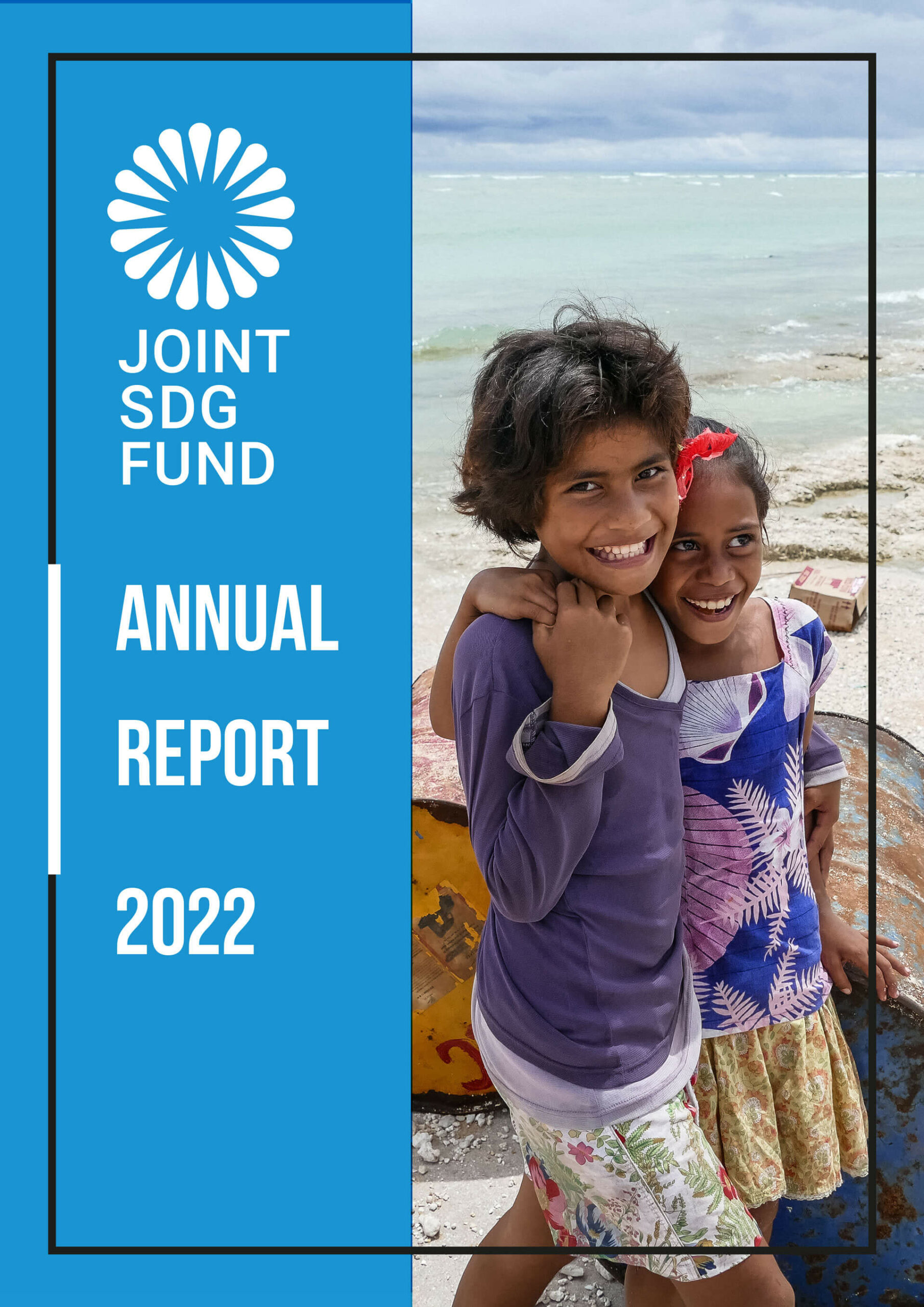How We Work
The Joint SDG Fund has four key features that promise to bring about substantial positive change: first, its laser focus on facilitating integrated policy support with the transformative impact needed to accelerate the SDGs; second, its huge potential to facilitate a shift in the UN from funding to financing; third, its crucial support to UN development reforms; and fourth, its competitive design and rigorous operational framework.
First – Its Ability to Facilitate the Integrated Policy Support Needed to Achieve the SDGs
The strategy for the Joint SDG Fund’s portfolio is to unlock systemic policy shifts by focusing on ‘leverage points’ that will catalyse rapid progress across goals. Given the imperative of the Integrated Policy for Leaving No One Behind (LNOB) promise embedded in the 2030 Agenda, the Joint Fund’s first call in mid-2019 placed particular emphasis on the most vulnerable and marginalised communities across the globe.
Similarly, given the critical importance of the Secretary-General’s Strategy and Road Map for Financing the 2030 Agenda, the second call – launched at the end of 2019 – directed US$ 100 million towards: 1) reinforcing the country-level SDG financing architecture through development of national financing strategies and enabling frameworks for SDG investment; and 2) catalysing strategic investments in key initiatives that would in turn leverage public and private financing to advance the SDGs. The Joint Fund is committed to providing demonstrations of concept and forging partnerships that unlock capital for the SDGs at scale.
The Fund’s ‘whole-of-society’ approaches, and its agility and responsiveness, has assumed even greater relevance since the COVID-19 outbreak began. Importantly, the LNOB social-protection programmes supported by the Joint SDG Fund have been repurposed, with up to 20% of their budgets reallocated to areas immediately impacted by COVID-19, as well as SDG acceleration in critical sectors – such as better healthcare data analytics and low-cost, informal social-protection interventions. The Joint SDG Fund's COVID-19 interventions are working in concert with other COVID-19 recovery funds.
Second – Making ‘Funding to Financing’ Happen
The Joint SDG Fund is the only fund of its kind on SDG financing that operates across the UN system. It also has the capability to use limited UN resources as a catalyst to engage much larger financing flows. As such, it is quickly becoming a practical mechanism for helping programme countries, as well as the UNDS, move from ‘funding to financing.’
If country-level demand is any indication, then the Joint SDG Fund indeed has huge potential - the proposals submitted require funding that dwarfs the Fund’s current resources. The Joint Fund is also important not only for mapping out the financing required for SDG acceleration, but is also highly relevant for response to COVID-19. Financing work now underway will help shape a new generation of SDG-related response strategies, adding COVID-related recovery components, and integrating future preparedness and risk mitigation measures into financing frameworks.
Third – A Critical Lever for Successful Reform of the UN’s Development Work
In addition to incentivising policy shifts that leverage the UN’s substantive comparative advantages, the Joint Fund provides a vehicle for UN Resident Coordinators to leverage significant amounts of SDG financing. Further, in supporting funding that injects synergy into the UN System rather than pulling it apart, the Joint Fund builds on the underlying logic of the Funding Compact.
Lessons learned from the past show that effective pooled funding can help drive greater coherence not only within the UN but across government. It can also better bring the normative and operational roles, and distinct capacities, of the UN together. Through focusing on the distinct role of the UN – ‘leaving no one behind’ – and leveraging all of the organisation’s unique assets, the Joint SDG Fund has the potential to be a game changer.
Fourth – Its Competitive Design and Rigorous Operational Framework
The Joint SDG Fund has been deliberately designed with the following elements – key to the success of any joint programme: A strategy that balances ‘quick wins’ and transformative results. A clear theory of change for multi-sectoral SDG acceleration. A clear focus on policy levers that produce catalytic, systemic change; prioritising those left behind and mainstreaming human rights mechanisms; and co-delivery of results through effective partnerships. Further, all proposals undergo professional independent scrutiny based on rigorous technical assessment criteria. Additionally, the fund contains an element of challenge and competition seen in few other UN pooled-funding instruments. All of these elements combine to make the Joint SDG Fund uniquely capable of bringing about substantial positive change and achieving the SDGs.



















